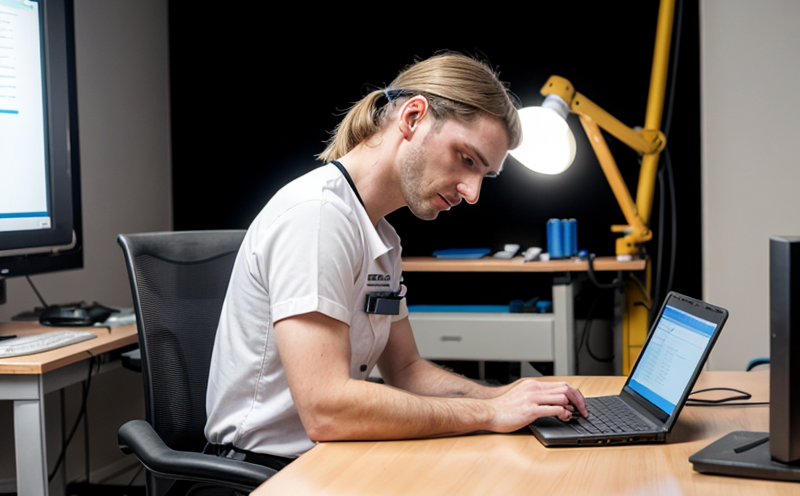ISO 24500 Cockpit Control and Display Readability Testing
The ISO 24500 standard is specifically designed to ensure that cockpit controls and displays are readable under all conditions, including those where visibility can be compromised due to ambient lighting or other environmental factors. This service is crucial for aviation safety, as legible and easily identifiable control elements directly impact the pilot's ability to operate aircraft effectively.
The testing process involves several steps aimed at evaluating the readability of both static and dynamic displays within an aircraft cockpit. Static displays are those that remain visible without any active change, such as dials or switches, while dynamic displays include moving images or text, like navigation systems or warning indicators.
For effective testing, we use high-resolution cameras and specialized software to simulate various lighting conditions similar to real-world scenarios. This includes testing the readability of controls under direct sunlight, low-light environments such as night flights, and varying angles that pilots might encounter during different flight maneuvers.
The standard focuses on several key factors:
- Contrast between the text or symbols and its background
- Size of characters and symbols
- Color combinations used for displays
- Luminance levels and uniformity
We employ a combination of subjective assessments, such as pilot feedback sessions, and objective measurements to ensure compliance with ISO 24500. Subjective evaluations help us understand how well pilots perceive the controls under different lighting conditions, while objective metrics provide data-driven insights into the actual readability.
Our laboratory uses state-of-the-art equipment to simulate a wide range of environmental factors that might affect visibility in cockpits. This includes adjustable light sources with various color temperatures and intensities, as well as motion simulators capable of replicating the movements pilots would experience during flight.
The testing process typically involves several iterations to refine both the design and placement of controls and displays until they meet all specified criteria outlined in ISO 24500. Compliance with this standard is not just about meeting regulatory requirements but also enhancing overall aviation safety by ensuring that pilots can quickly and accurately access critical information.
Our team works closely with clients to understand their specific needs, whether it's for new aircraft designs or modifications to existing models. We provide detailed reports that include recommendations for improvements based on our findings during testing.
| Environmental Factor | Description | Tested Conditions |
|---|---|---|
| Direct Sunlight | Simulating sunlight conditions during daytime flights. | Evaluating readability in high-contrast environments. |
| Night Environment | Recreating nighttime flight scenarios with minimal ambient light. | Assessing visibility and legibility under low-light conditions. |
| Motion Simulation | Simulating the dynamic movements pilots experience during maneuvers. | Evaluating control responsiveness and display stability. |
Benefits
The implementation of ISO 24500 cockpit control and display readability testing offers numerous advantages, particularly for aviation safety. By ensuring that all controls and displays are easily readable under various conditions, the standard helps reduce human error, which is one of the leading causes of accidents in aviation.
Improved pilot-crew communication ensures that critical information is conveyed accurately and promptly. This leads to better decision-making processes during high-pressure situations. Additionally, compliance with this standard demonstrates a commitment to adhering to international best practices, thereby enhancing an organization's reputation within the industry.
The testing process also provides valuable insights into potential improvements for future aircraft designs. By identifying areas where readability can be enhanced, manufacturers and designers can create more intuitive interfaces that improve overall operational efficiency.
Industry Applications
- Airline companies ensuring safety and reliability of their fleets
- Manufacturer compliance with international standards for new aircraft models
- R&D departments focusing on enhancing cockpit ergonomics and usability
- Aviation regulatory bodies conducting audits to ensure adherence to safety regulations
Quality and Reliability Assurance
The ISO 24500 standard plays a pivotal role in maintaining high standards of quality and reliability within the aerospace industry. By adhering strictly to this guideline, manufacturers can ensure that their products not only meet but exceed regulatory requirements.
Quality assurance through rigorous testing ensures consistent performance across all units produced. This consistency is crucial for maintaining trust among customers who rely on these products for safe operations. Moreover, it fosters innovation by encouraging continuous improvement in design and functionality.
Reliability assurance provided by this service guarantees that aircraft systems will function correctly even under challenging circumstances. This reliability translates into reduced maintenance costs over time as fewer issues arise due to poor initial design or manufacturing defects.





